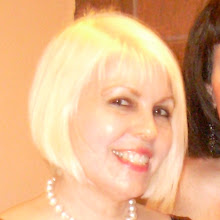
Like Jekyll and Hyde, The Picture of Dorian Gray differed from what I expected based on movie versions I had seen.
Like many of the books written during this time period, the viewpoint wanders considerably. The story starts in the viewpoint of the painter, Basil Hallward. It changes to the viewpoint of a friend of Basil’s, Lord Henry, and finally we see the story through the eyes of Dorian Gray. After that, Wilde head-hops and changes point of view, sometimes within a paragraph.
Film versions tend to take the viewpoint of the main character and lessen the male-centric orientation, as did the film versions of Jekyll and Hyde.
As far as gender issues go, we know that Oscar Wilde was gay and we are now aware that his perspective colors the story. Obviously, readers of the time didn’t pick up on the homoerotic overtones in this book, because if they had it surely would have been banned.
Granted, the gentlemen of that time were rather foppish, perfuming their handkerchiefs, burying their face in lilacs and exhaustively reading poetry. In the text they call it “Dandyism.” But the men in this book are so completely absorbed in each other, one wonders.
Basil’s first description of Dorian is that of an infatuated schoolgirl. “Every day. I couldn’t be happy if I didn’t see him every day. He is absolutely necessary to me.” And “Now and then he is absolutely thoughtless. He seems to take delight in giving me pain.”
Basil tries to prevent Lord Henry from even meeting Dorian, then when he cannot prevent it, Dorian’s strong reaction to Lord Henry cuts Basil to the quick. Dorian says to Lord Henry, “ ‘…let our friendship be a caprice,’ he murmured, flushing at his own boldness.” And “For days after I met you, something seemed to throb in my veins.”
This book is also about the self-denial imposed by modern society. Lord Henry says, “The mutilation of the savage has its tragic survival in the self-denial that mars our lives.” The nature of this self-denial is never spelled out. It would seem that there is little that these privileged males have to deny themselves.
Lord Henry constantly derides women, most of all, his wife. When Dorian becomes infatuated with a woman, both Basil and Lord Henry are dismayed and try to talk him out of it. Sibyl Vane is more of an icon of idealized beauty to Dorian than she is a real woman, and once she shows her imperfections (in giving a bad acting job in front of his friends, due to her love for him) he discards her like a used doll. She has ruined his illusion of her.
After that he goes back to the company of men. “…entertaining the fashionable young men of his own rank who were his chief companions.”
Basil asks, “Why is your friendship so fatal to young men?” He gives a laundry list of young men whom Dorian has defiled.
Then there’s the matter of Dr. Alan Campbell whom Dorian blackmails into helping him dispose of Basil’s body. What is in the mysterious letter about Campbell that Dorian threatens to expose? We never know the specifics. One can only guess.
Ultimately, Dorian is a narcissist. He is self-centered, not only in not wanting to age. That’s the least of it. His entire life is an attempt to amuse himself. He has little use for anything that bores him or isn’t directly about him, and he is only interested in Sibyl when he can show off her talent. Dorian never thinks about doing anything for anyone other than himself. In the end, his narcissism does him in.
I also think it’s interesting to see, in the Norton Critical Edition, the differences between his first serialized draft and his final published version. He made small changes within the text, but he mainly dropped in whole chapters (and at one point added five), in order to extend the text and add depth to his characters. Some of it seems gratuitous and would never be accepted today, such as Wilde’s extensive descriptions of the interests Dorian immersed himself in to forget about Sibyl’s death, and some extensive cocktail party scenes that serve little else than displaying Wilde’s ability to inject wit.
The ornate style Wilde uses perfectly defines the era in which Dorian lives. He writes about privileged classes who have a lot of time on their hands to pursue the arts, read poetry, have extended discussions about philosophy. His flowery, overly descriptive language completely drew me into the spirit of the period.
Also, as noted in Sexual Anarchy: Gender and Culture at the Fin de Siecle, societies tend to become more decadent toward the end of each century. The Picture of Dorian Gray was published in 1891, so the depiction of the self-indulgent lifestyle as reflected in Oscar Wilde’s use of language is true to the period.
Works Cited:
Showalter, Elaine. Sexual Anarchy: Gender and Culture at the Fin de Siecle. New York: Viking, 1990. Print.
Wilde, Oscar. The Picture of Dorian Gray, a Norton Critical Edition. New York: WW Norton & Company, 2007. Print
Painting: Narcissus by Waterhouse

I love that you used the picture of Narcissus. It is very fitting.
ReplyDeleteI love preRaphaelite art as well.